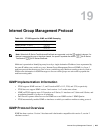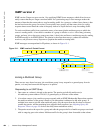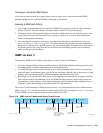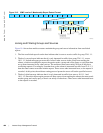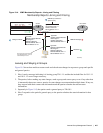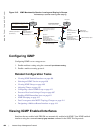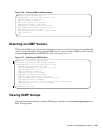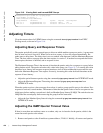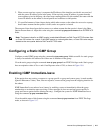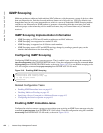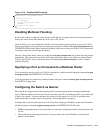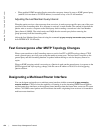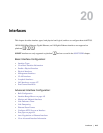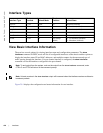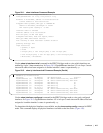
410 | Internet Group Management Protocol
www.dell.com | support.dell.com
Figure 19-8. Viewing Static and Learned IGMP Groups
Adjusting Timers
View the current value of all IGMP timers using the command show ip igmp interface from EXEC
Privilege mode, as shown in Figure 19-6.
Adjusting Query and Response Timers
The querier periodically sends a general query to discover which multicast groups are active. A group must
have at least one host to be active. When a host receives a query, it does not respond immediately, but
rather starts a delay timer. The delay time is set to a random value between 0 and the Maximum Response
Time. The host sends a response when the timer expires; in version 2, if another host responds before the
timer expires, the timer is nullified, and no response is sent.
The Maximum Response Time is the amount of time that the querier waits for a response to a query before
taking further action. The querier advertises this value in the query (see Figure 19-1). Lowering this value
decreases leave latency but increases response burstiness since all host membership reports must be sent
before the Maximum Response Time expires. Inversely, increasing this value decreases burstiness at the
expense of leave latency.
• Adjust the period between queries using the command
ip igmp query-interval from INTERFACE mode.
• Adjust the Maximum Response Time using the command
ip igmp query-max-resp-time from
INTERFACE mode.
When the querier receives a leave message from a host, it sends a group-specific query to the subnet. If no
response is received, it sends another. The amount of time that the querier waits to receive a response to the
initial query before sending a second one is the Last Member Query Interval (LMQI). The switch waits one
LMQI after the second query before removing the group from the state table.
• Adjust the Last Member Query Interval using the command
ip igmp last-member-query-interval from
INTERFACE mode.
Adjusting the IGMP Querier Timeout Value
If there is more than one multicast router on a subnet, only one is elected to be the querier, which is the
router that sends queries to the subnet.
1. Routers send queries to the all multicast systems address, 224.0.0.1. Initially, all routers send queries.
FTOS(conf-if-gi-1/0)#do sho ip igmp groups
Total Number of Groups: 2
IGMP Connected Group Membership
Group Address Interface Uptime Expires Last Reporter
224.1.1.1 GigabitEthernet 1/0 00:00:03 Never CLI
224.1.2.1 GigabitEthernet 1/0 00:56:55 00:01:22 1.1.1.2




